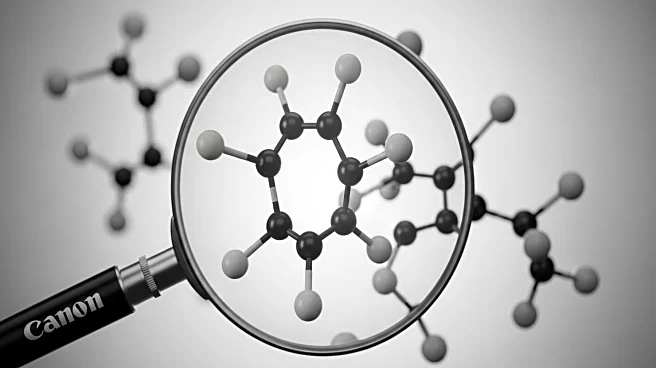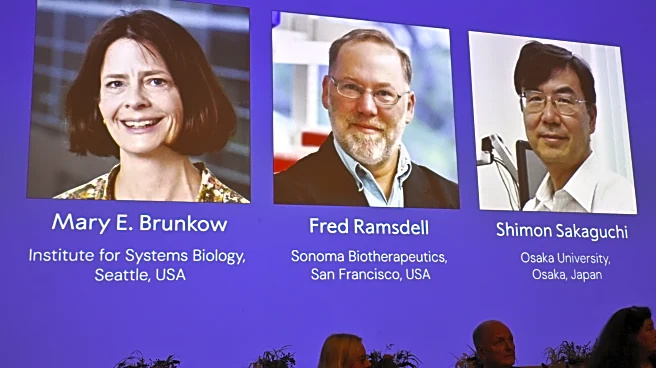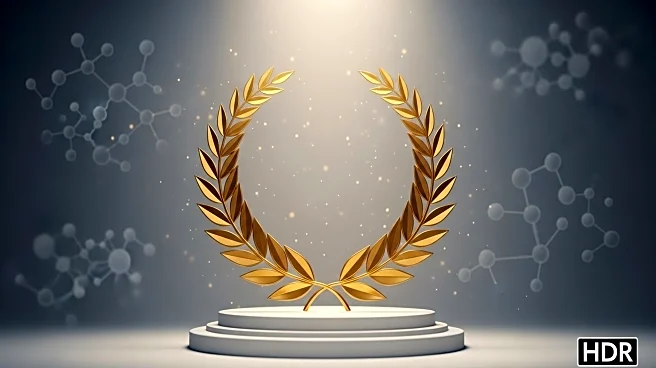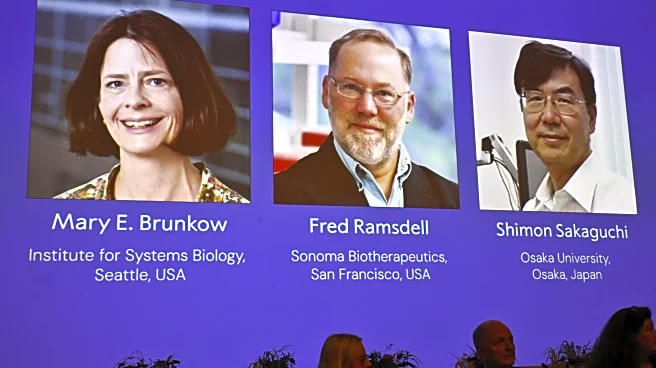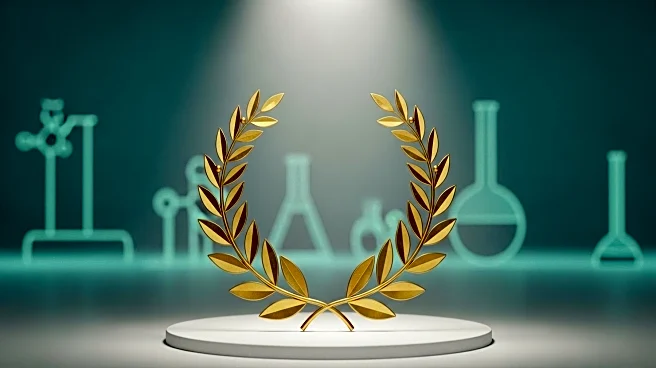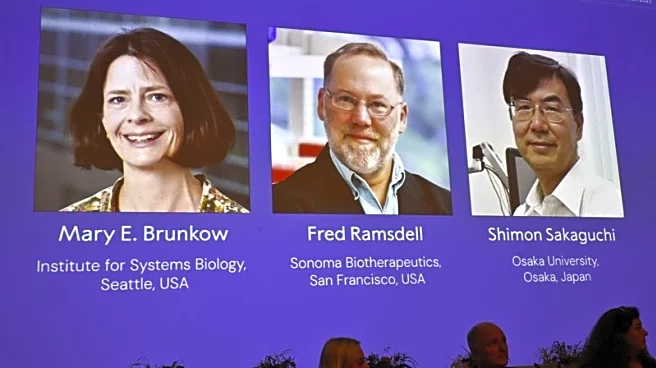What is the story about?
What's Happening?
The Nobel Prize in Physiology or Medicine for 2025 has been awarded to Mary E. Brunkow, Fred Ramsdell, and Shimon Sakaguchi for their groundbreaking work on peripheral immune tolerance. This research has significantly advanced the understanding of how the immune system prevents itself from attacking the body's own tissues. The trio's discoveries have laid the foundation for developing treatments for autoimmune diseases and cancer. The Nobel Assembly at the Karolinska Institute in Stockholm announced the award, which includes a prize of 11 million Swedish kronor. The research highlights the role of regulatory T-cells, which act as the immune system's brakes, preventing harmful T-cells from attacking healthy tissues.
Why It's Important?
The recognition of this research underscores its critical impact on medical science, particularly in the fields of autoimmune diseases and cancer treatment. By understanding peripheral immune tolerance, scientists can develop therapies that enhance or suppress the immune response as needed. This has implications for improving organ transplantation success rates and developing new cancer treatments. The discoveries also provide insights into why some individuals develop autoimmune diseases while others do not, potentially leading to more personalized medical approaches. The award highlights the importance of continued research in immunology and its potential to transform healthcare.
What's Next?
The award ceremony for the Nobel Prize in Physiology or Medicine will take place on December 10, coinciding with the anniversary of Alfred Nobel's death. The recognition of this research is expected to spur further studies and clinical trials aimed at harnessing the potential of regulatory T-cells in treating various diseases. The scientific community will likely focus on translating these findings into practical medical applications, potentially leading to new therapies for autoimmune conditions and cancer. The ongoing research may also explore additional mechanisms of immune regulation, further expanding the understanding of immune system dynamics.
AI Generated Content
Do you find this article useful?
